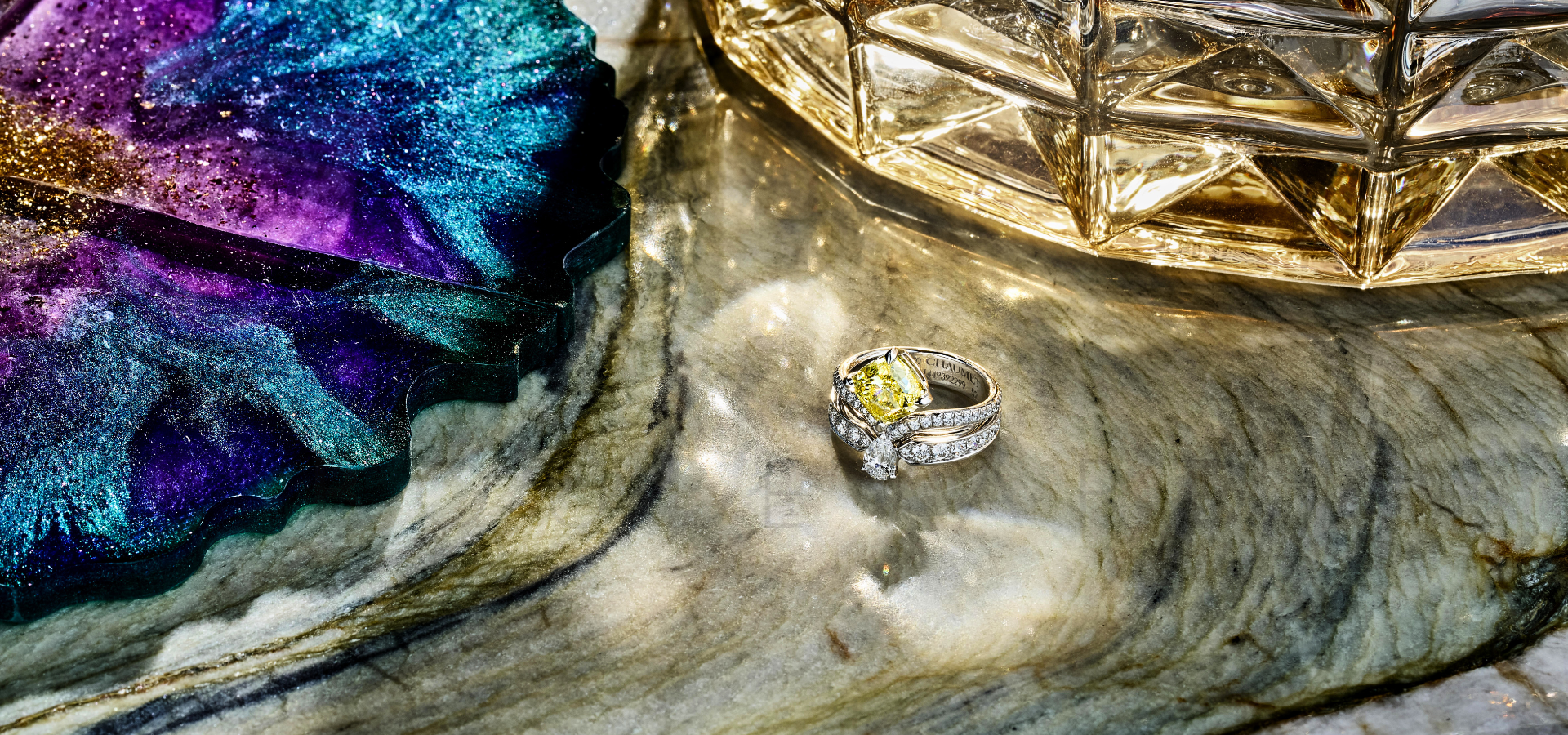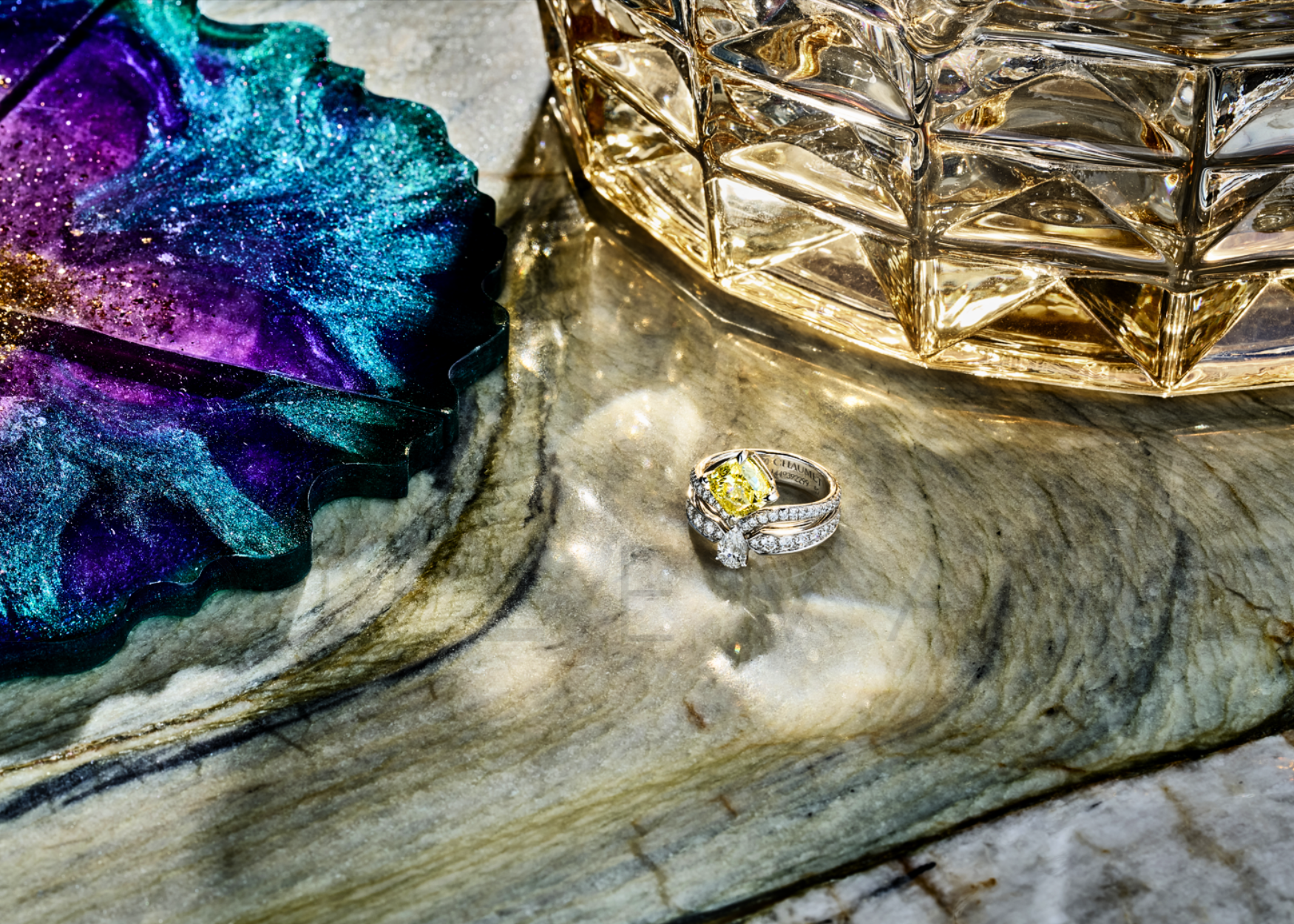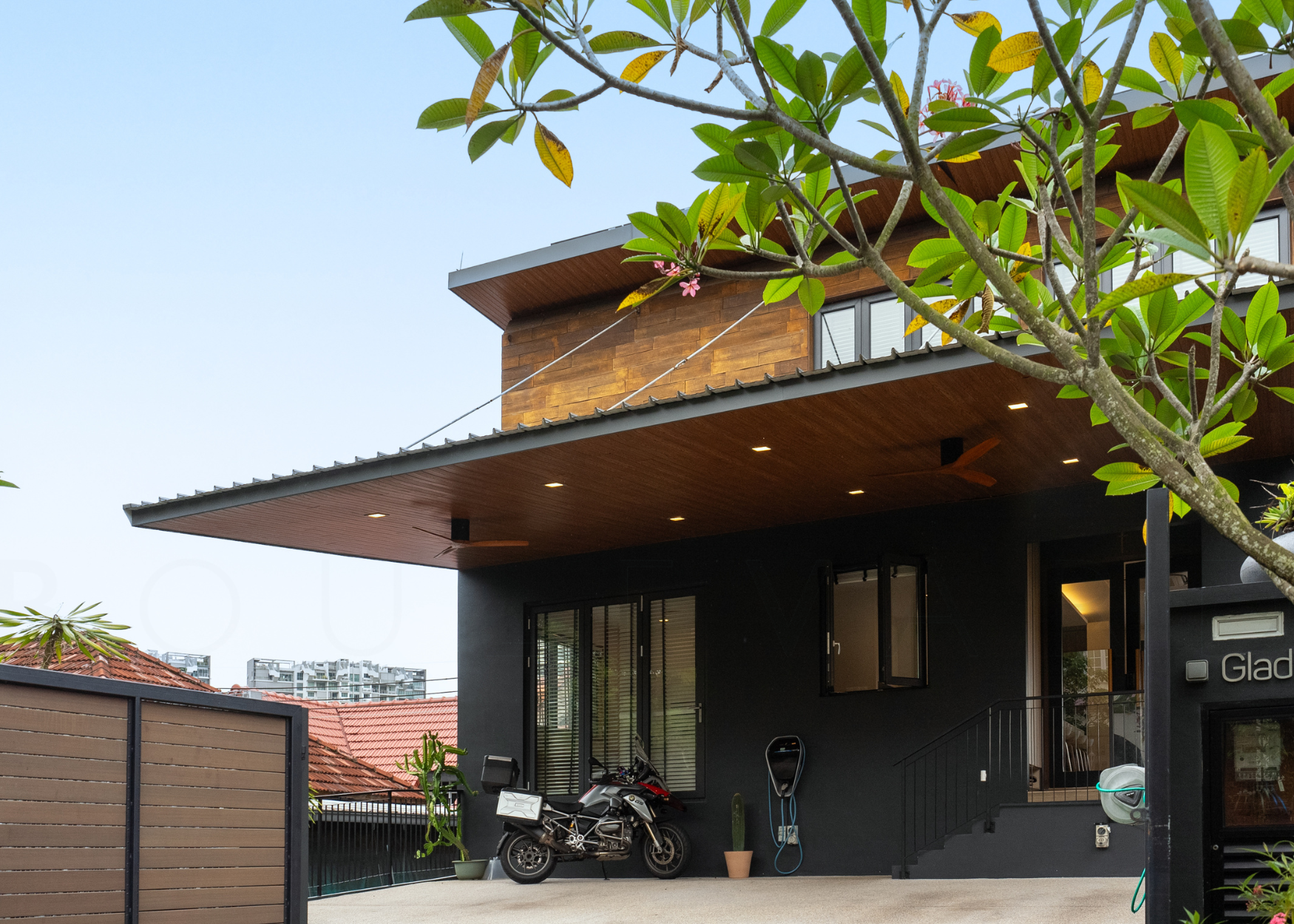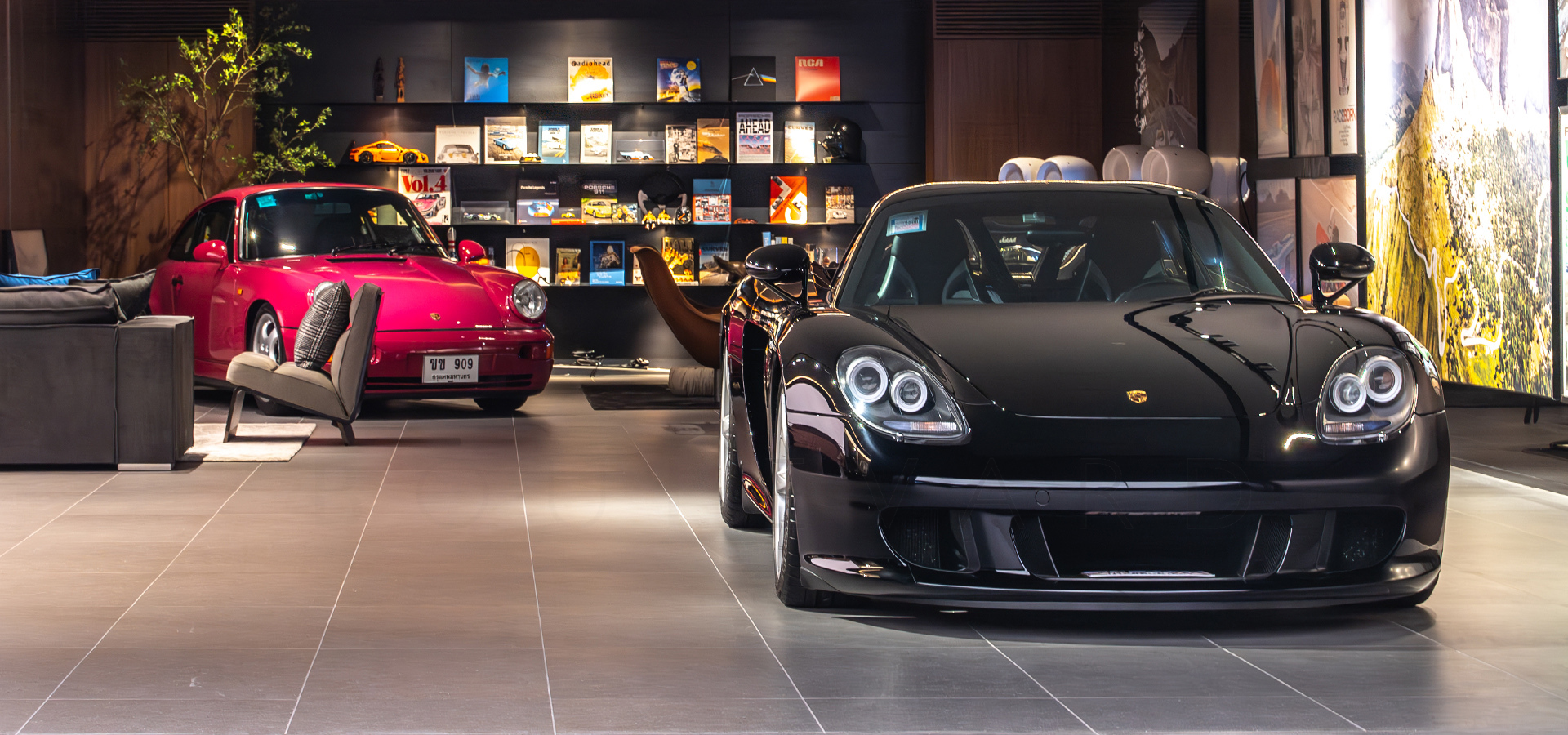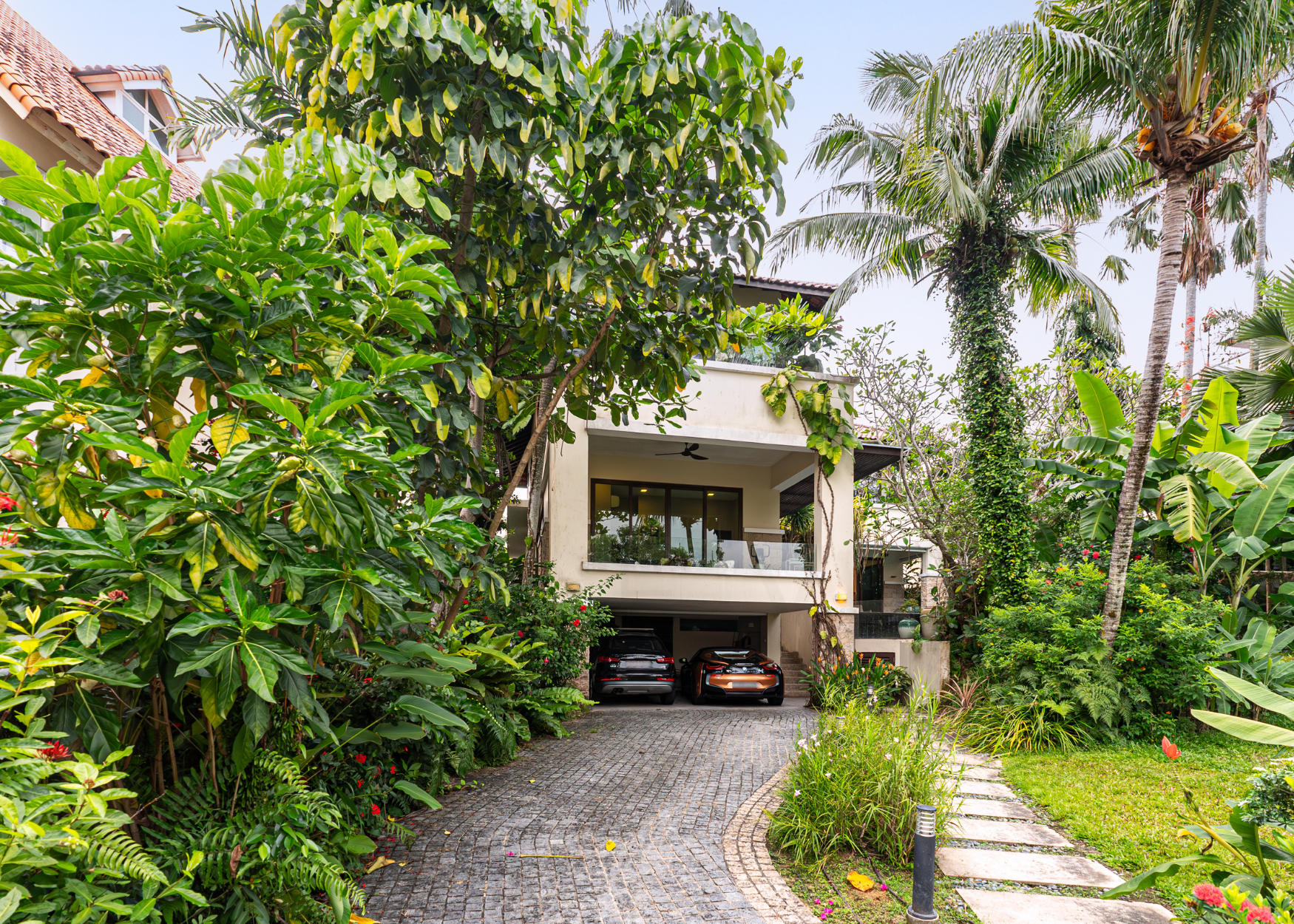Beyond rarity: Why coloured diamonds are catching the eye of high-jewellery collectors
by Karishma Tulsidas
Photography by Kevin Khng
Geopolitics, scarcity, and soaring auction prices – coloured diamonds hold a unique fascination for collectors and connoisseurs alike.
Shot on location at the Ritz-Carlton Residences Penthouse Singapore
Did you know that only 0.1 per cent of diamonds in the world are coloured? Add to that the dwindling supply caused by the Russia-Ukraine war and shipping disruptions, and finding a quality coloured diamond is becoming an increasingly elusive treasure hunt.
But that has not dampened the demand for these stones. The price for coloured diamonds is skyrocketing on the auction circuit. Just last year, two fancy vivid blue diamonds shattered sales records: the 17.61-carat Bleu Royal (US$44 million, Christies) and the 11.28-carat Infinite Blue (US$25.4 million, Sotheby’s Hong Kong).
Sotheby’s co-head of sale and specialist for jewellery Uni Kum explains, “Coloured diamonds have been steadily growing in auction and we see this trend from all sectors of the market, from seasoned collectors to discerning trade.”
Saagar Mehta, director of Infiniti Jewels and a diamond graduate at the Gemological Institute of America (GIA), attributes this increasing popularity to a couple of factors, including, “With classic pure white diamonds being around for such a long time, collectors want something more unique. Plus, the colours also have certain symbolism in different cultures, which increases the demand in those cultures.”
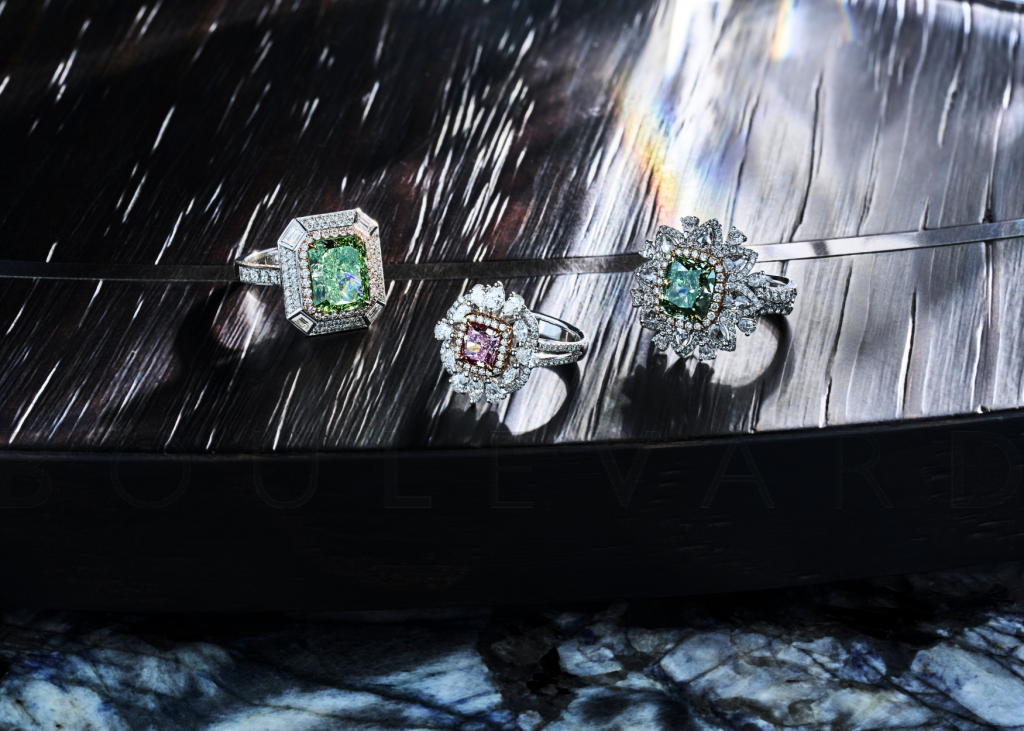
Rings set with green and pink diamonds and diamonds, by Canary Diamonds.
Moreover, the brilliance of a coloured diamond sets it apart from other gemstones like sapphires or emeralds. Unlike these coloured gemstones, which absorb light to display their rich colour, diamonds refract light, creating vibrant flashes and a dazzling display.
But even within the rarefied world of coloured diamonds, there’s a hierarchy. The rarest coloured diamonds are reds, followed by blues and pinks, says Saagar. He adds, “Colours that are becoming as rare as pink are green, orange and purple.”
Surprisingly, this is not reflected by auction results, as Uni says that blues and pinks tend to dominate the auction block. “I would say blue diamonds broke world records throughout the decade and remained at the top until the recent trend of the pink wave. Green and yellow diamonds are also well sought after, and unique hues such as red or purple diamonds are finding a good collector’s base.”
Saagar imagines that the disparity could be because “reds are the rarest because they have the most limited supply.” He adds, “It is extremely rare to see a red diamond, and one carat will command more than US$1million today.”
This interest in coloured diamonds is nothing new. Throughout history, jewellers have made headlines with their acquisitions of sizeable, coloured diamonds. Take Cartier and the Hope Diamond, a blue diamond once owned by Louis XIV of France.
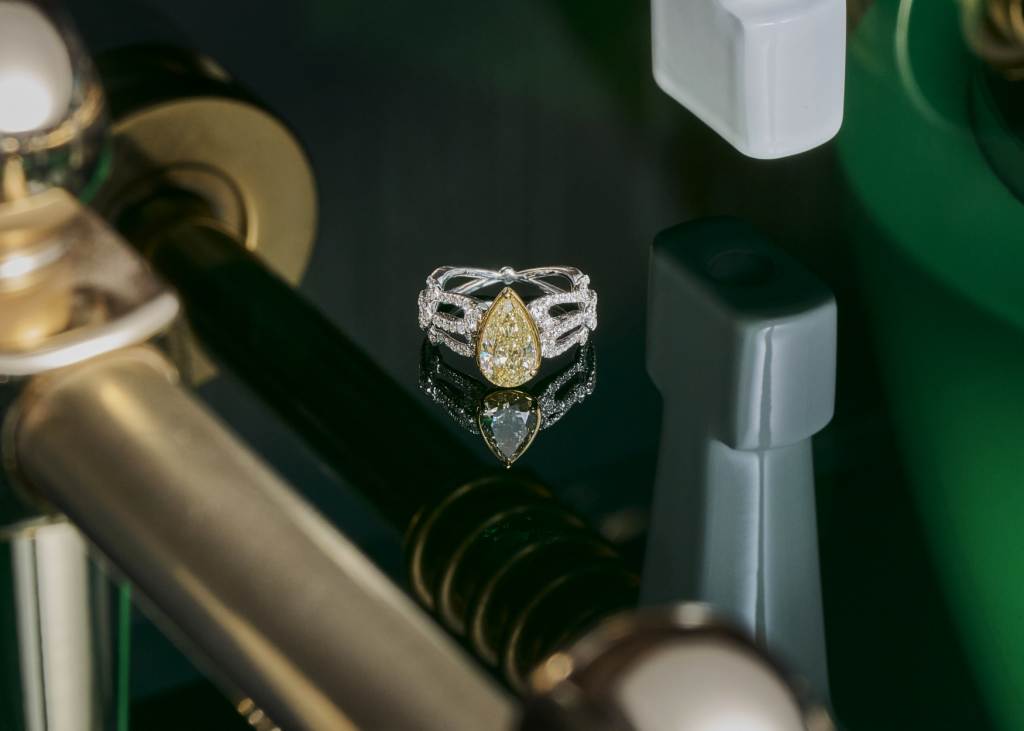
Ring set with yellow diamond and diamonds, by Simone Jewels.
“Typically, the most sought-after stones are vivid.”
The Tiffany Yellow Diamond, weighing 128.54 carats, is one of the jewellery house’s pride and joy: Acquired in 1878, it’s only been worn publicly by four notable women, including Audrey Hepburn, Lady Gaga, and most recently Beyoncé.
Assessing a coloured diamond
As with coloured gemstones such as sapphires and emeralds, colour is unsurprisingly the most important factor when it comes to evaluating the stone. Another important criterion is saturation, referring to the intensity of the colour, and which lends it prefixes such as intense, fancy, vivid. Typically, the most sought-after stones are vivid as it implies that the stone is highly saturated. “Due to this factor,” says Saagar, “it also makes for the highest premium for a coloured diamond.”
Many coloured diamonds also feature a secondary colour, creating combinations like “purplish-pink” or “yellow-green”. While diamonds with a single dominant hue tend to perform better at auction, Uni notes that secondary colours can sometimes enhance a stone’s beauty. “I personally love purplish-pink diamonds as the secondary hue adds a sweet depth to the pink,” she says.
Where in the world?
Like in real estate, location matters. “With the recent closing of the Argyle mine [the world’s largest producer of pink diamonds in Australia], there has been an emphasis on the colour pink,” says Uni.
Hence, it’s no surprise that when Tiffany & Co launched its exclusive Argyle Pink collection in 2023, it was sold out to a single customer (understandably, the brand refuses to disclose more details). The 35-piece collection featured a range of pink diamonds, from fancy intense pink and deep pink to even a fancy red.
Victoria Reynolds, chief gemmologist and vice president of diamond and gemstone acquisition for Tiffany & Co, explains: “Argyle approached Tiffany in 2022 and exclusively offered this exceptional collection of diamonds. This was incredibly attractive to us as it was the first time that the mine curated a bespoke collection named in honour of a jeweller.”
She adds that this small cache of 35 stones were “unearthed during the last mining period. Due to the unique combination of immense pressure and temperature required to form these diamonds, they are typically smaller than 1 carat in size. Among the 35 Argyle Pink™ Diamonds acquired by Tiffany, only three are over 1 carat – representing the extreme rarity within rarity.”
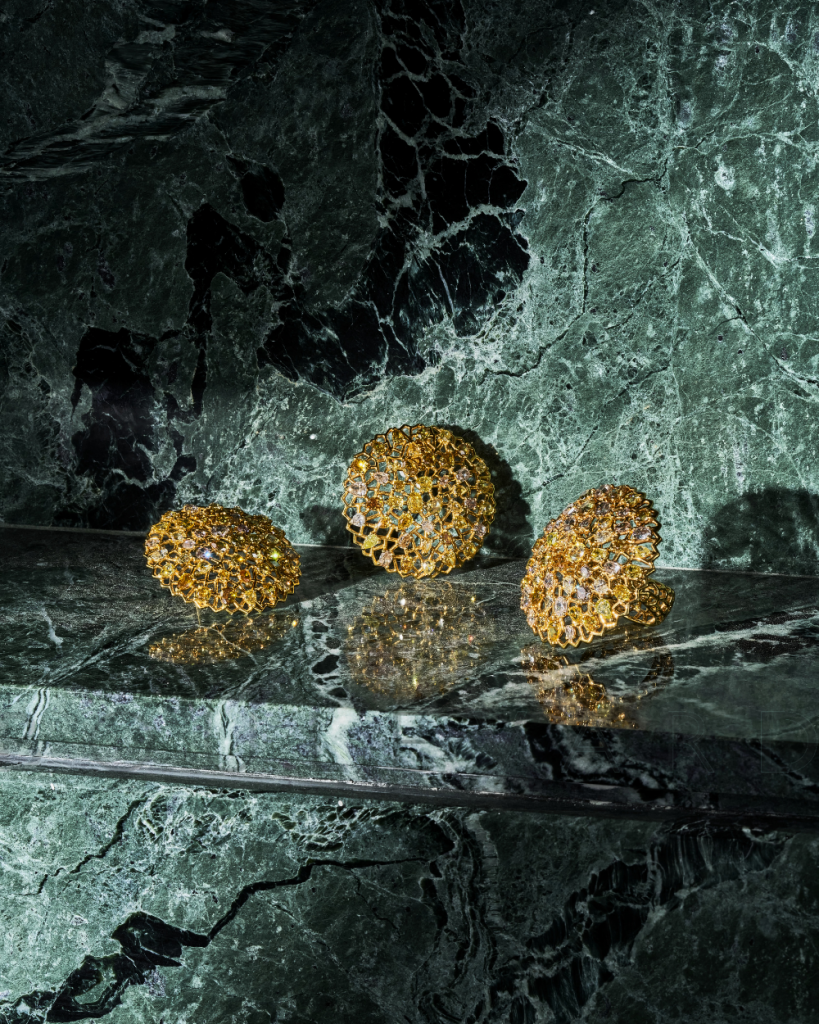
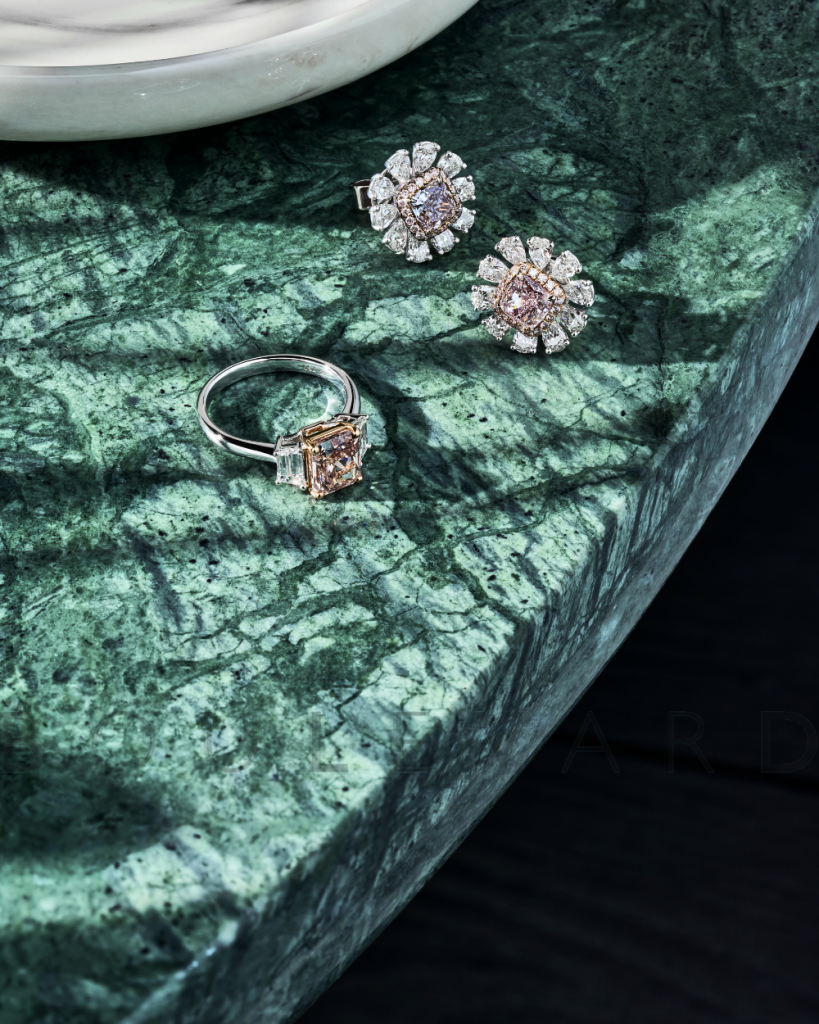
Left: Earrings and cocktail ring in yellow gold set with fancy coloured diamonds, by D&A Jewellery. Right: Ring and earrings set with pink diamonds and diamonds, by Infiniti Jewels.
At Sotheby’s, Uni has noticed, “The quality of the coloured diamond dictates the rarity of the gemstone, and when it is coupled with an origin that is also well recognised, it can add to the desirability of the jewel.”
She adds, “[Some notable diamonds include] the De Beers Blue and the De Beers Millennium Jewel 4 from the Cullinan mine in South Africa, which yielded many of the most famous diamonds in the world. The Williamson Pink Star originated from the Williamson mine [in Tanzania], which was famous for producing fine ‘bubblegum’ pink diamonds.”
Rare, elusive and exclusive, what makes coloured diamonds even more desirable is the fact that each stone is unique. As Uni says, “No two coloured diamonds are truly identical, making each specimen uniquely appealing to collectors.”
